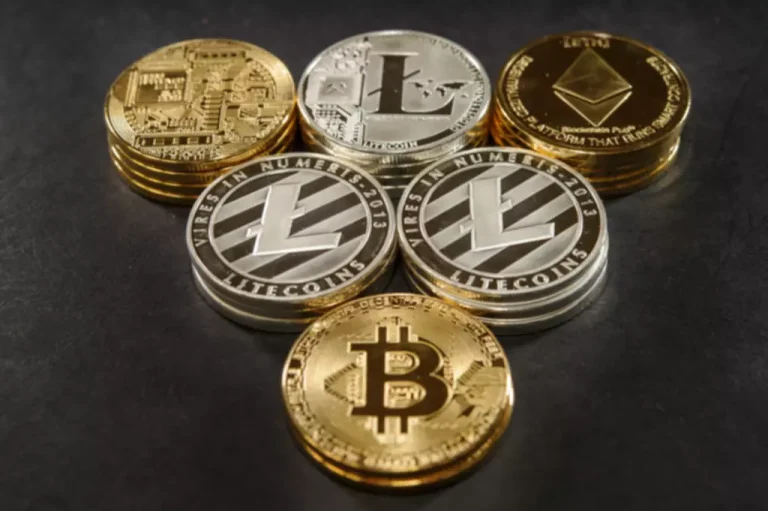FinTech
7 Best High-Frequency Trading Software for 2025
Strategies take advantage of brief pricing discrepancies between assets and exchanges by trading large volumes to maximize cumulative profits. Market making involves continuously posting limit orders to buy and sell securities, aiming to profit from the bid-ask spread. High-frequency trading (HFT) https://www.xcritical.com/ firms use low-latency infrastructure and machine learning algorithms to update quotes rapidly based on market conditions. The goal is to maximize spread capture over time while ending each day flat.
How Does High-Frequency Trading Increase Liquidity in the Financial Markets?
While the profit from each trade might be small, the high trading frequency can result in substantial cumulative returns. Becoming a successful HFT trader takes dedication, technical skills, and substantial capital. Ticker tape trading involves algorithms that monitor news and market data to Bitcoin trade on significant events before they are fully priced into securities.
High-Frequency Trading (HFT): Definition, Origin, Strategies, Return, Regulations
While certain HFT firms sometimes engage in flash trading, it is not intrinsic to HFT itself. Rather, flash trading represents a particular controversial practice that high-frequency traders sometimes employ along with other strategies. However, flash trading on unfair informational asymmetries falls into a grey area legally and ethically. High-frequency traders (HFTs) make money by using sophisticated algorithms running on powerful computers to transact large orders at ultra-fast speeds measured in milliseconds or microseconds. By high frequency forex trading trading in high volumes and capitalizing on tiny discrepancies in prices across markets, HFTs are able to accumulate small, low-risk profits that add up over time.
The State of HFT In The Trading Industry
Eventually, you can become fully independent with your own capital once you are seasoned. High-frequency trading strategies may use properties derived from market data feeds to identify orders that are posted at sub-optimal prices. Such orders may offer a profit to their counterparties that high-frequency traders can try to obtain. Other sources of income for HFT firms are the fees they receive for providing liquidity for electronic communications networks and some exchanges. HFT firms act as market makers by creating bid-ask spreads and churning mostly low-priced, high-volume stocks many times daily.

The extremely short time horizon of HFT algorithms, holding positions for milliseconds or less, makes them vulnerable to sudden volatility. Most HFT strategies assume normal market conditions and relatively stable correlations. Significantly heightened volatility or a breakdown in historical relationships causes models to fail.
HFT systems rely on complex predictive models that identify temporary pricing anomalies and market inefficiencies. The models are trained on vast historical datasets of ticks, time & sales, order book snapshots, and other market data. Algorithms ingest this data and continuously optimize massive numbers of parameters to detect patterns invisible to humans.
They trade the overvalued stock against the lagging ETF to profit when pricing corrects back to equilibrium. Low latency networks and co-located servers allow for the near-instantaneous capture, analysis, and trading of information. Natural language processing handles unstructured data like press releases or social media. Machines don’t get caught up in the emotions around news events – algorithms capitalize on predictable short-term momentum. Major announcements from central banks and companies offer trading opportunities.
It’s not uncommon for High-Frequency trading firms to identify themselves as market makers. This approach involves placing limit orders to buy or sell, aiming to earn profits from the bid-ask spread. Market makers serve as counterparts to incoming market orders, improving liquidity. While this role was once exclusive to specialist firms, it’s now embraced by a wide range of investors, thanks to direct market access.
The limit order book shows all outstanding buy and sell orders for stock, organized by price level. Traders look to the order book for indications of supply and demand imbalances to inform their trading. Quota stuffing is an unethical and illegal practice in the stock market where a trader floods the market with non-bona fide orders to give the illusion of activity and interest in a particular stock.
This precludes HFT funds from benefiting from proven investing approaches. Their algorithms react within microseconds to new data or price changes on related assets. This rapidly incorporates new information into prices before most human traders even blink. As a result, prices more closely reflect true equilibrium values informed by current conditions. Information leakage provides an edge, with machine learning detecting early price action in futures, currencies, and ETFs, implying upcoming data surprises.

These companies are often at the forefront of technological innovation in the financial markets, utilising state-of-the-art software and infrastructure to execute trades across global markets. Proprietary software and HFT platforms are essential components of HFT systems. These platforms are designed to handle vast amounts of data in real-time and execute trades based on pre-programmed algorithms without human intervention. Futures, Options on Futures, Foreign Exchange and other leveraged products involves significant risk of loss and is not suitable for all investors. Spot Gold and Silver contracts are not subject to regulation under the U.S.
For example, the adoption of 5G networks could allow near-instantaneous wireless trading speeds. However, diminishing returns sometimes eventually set in – while microseconds provide an edge today, nanoseconds in the future sometimes do not yield meaningful advantages. Regulators sometimes also step in if pursuits of marginal speed benefits are seen as destabilizing. News-based trading seeks to capitalize on significant announcements that impact asset prices before human traders react. Algorithms ingest and analyze news feeds, earnings releases, regulatory filings, social media, and other text sources to identify tradable events using natural language processing and machine learning.
- Controls against manipulation will preserve stability around news events.
- Firms meticulously monitor system performance and trading results to identify any potential bugs or degraded accuracy.
- In September 2011, market data vendor Nanex LLC published a report stating the contrary.
- Despite some controversies and risks, with continuous technological advancement and improving regulations, HFT will continue to play its positive role in enhancing market efficiency and increasing liquidity.
- Unlike traditional trading strategies, which may hold positions for hours, days, or even months, HFT platforms aim to buy and sell securities in microseconds.
- Exchanges also monitor for abnormal order activity and take disciplinary action like fines, trading bans, or loss of exchange memberships.
- The U.S. Securities and Exchange Commission (SEC) has also implemented various measures, including requiring exchanges to establish testing standards for automated systems.
He is the Global Director of Online Broker Research for Reink Media Group, leading research efforts for ForexBrokers.com since 2016. Steven is an expert writer and researcher who has published over 1,000 articles covering the foreign exchange markets and cryptocurrency industries. He has served as a registered commodity futures representative for domestic and internationally-regulated brokerages. Steven holds a Series III license in the US as a Commodity Trading Advisor (CTA).
